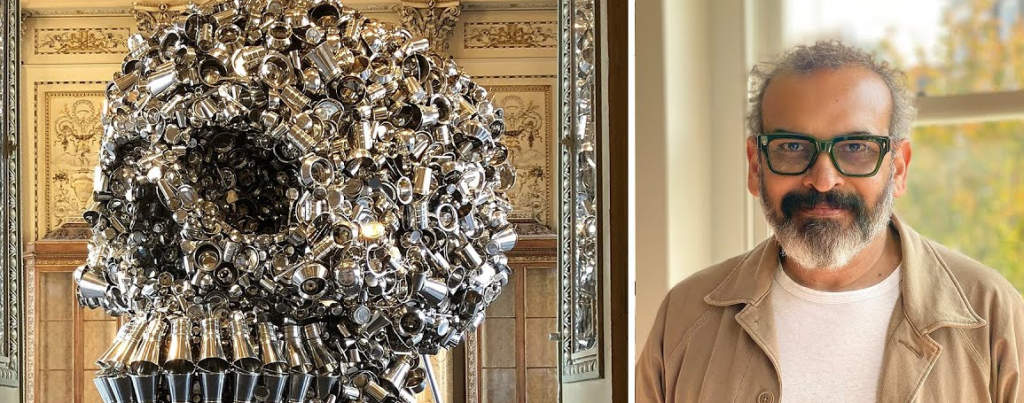Krispin Joseph
Subodh Gupta is one of the most remarkable names in contemporary Indian art. He is a multimedia artist who boasts an extensive repertoire of performance pieces, photographs, collages, paintings, sculptures, and installations. Subodh specialises in installations, which primarily use utensils and common kitchen items. The artist loves focusing on multi-dimensional spectacles, portraying the intersection of the Indian middle class and the globalized reality of a capitalist era.
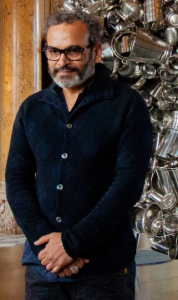
The notable aspect of his art is the use of Indian kitchen objects to create visual experiences of grandeur. Sometimes cast in gold and silver, the utensils he uses are common household goods, ranging from cowpats to metal pots and pans, vessels, and large steel kitchen shelves. Gupta repurposes these mundane objects to highlight a social phenomenon tied to time and space.
Gupta’s creations trace the lineage between social life and deprivation, modernity and capitalism, and hierarchy and power structures. A cultural reading of his work offers up an excellent view of the conflict between the Indian class and capitalism.
There is an interesting dynamic that emerges in his artistic journey, as he hailed from a small village in Bihar to the cultural capital of India and became a world-renowned artist. The connection between stainless steel utensils is as essential to him as his family ties. His father was a railway guard, and his mother was a homemaker. Utensils represent the childhood memories of his mother’s kitchen while steel symbolizes his father’s occupation. Railway has been a symbol of modernity in India since colonial times, and stainless-steel utensils suggest a growing reliance of the common household on modern technology.
Subodh Gupta began his creative journey as a poster designer in group theatre. After formal training from the Patna College of Arts and Crafts in 1983, he became an illustrator in a newspaper. He quit this job in 1988, moving to Delhi to pursue his artistic ambitions. When he started as a full-time artist, he brought his childhood memories of domestic middle-class life into his work.
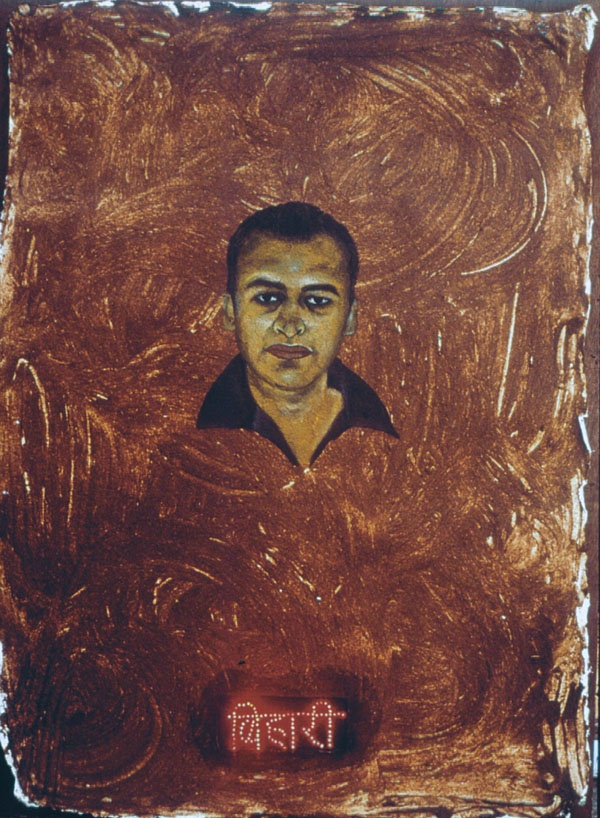
Courtesy: Mousse Magazine
Gupta’s adulthood was one of the most challenging times in India. Right-wing politics were on the rise; cow-belt politics and caste conflicts had become normalised. Gupta weaves these societal conflicts expertly into his work as social commentary. One of his early works, Bihari (1999), is a benchmark of this dialogue between artists and political enthusiasts. Using cow dung to fill the canvas, with the artist’s self-portrait in the middle, the artwork captures the erstwhile politics that fuelled the right-wing machinery. This is reminiscent of the current political climate, where religious sentiments are often used to manipulate the Indian middle class. In this artwork, cows and cow dung are used as a symbol of tyranny and to portray the quiet oppression of minority groups.
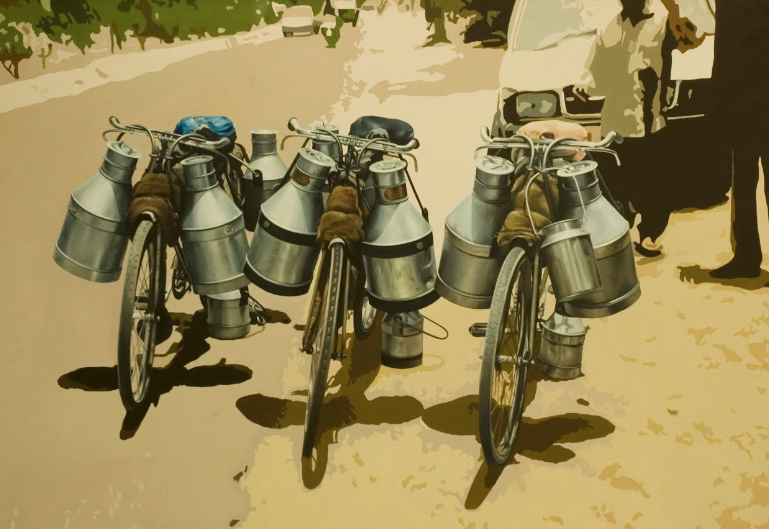
Courtesy: National Gallery of Modern Art,
His artwork, Three Cows (2003-04), diligently criticises vacuous cow politics. In this artwork, we are confronted with the image of three static bicycles carrying pails of milk. The cow itself is not visible but is only suggested as a form of exploitation, a statement hanging in the air. The Way Home (II) (2001) brings a traditional Indian home into the forefront, with cows and utensils that convey the middle-class dreams promised by such politics. People tree (2018), Ray (2012), Cooking the world (2017), Dada (2013), and All in the same boat (2012-13) are a few of the notable and significant works of the artist.
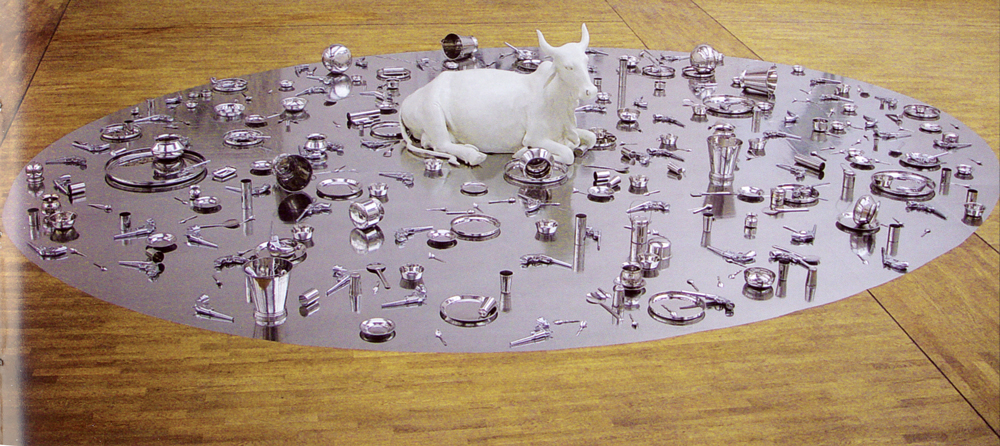
Courtesy: Indisk Kunst
If we go through these works, we understand how stainless-steel utensils play a material role in his work of art. In many works, he uses mass-produced utensils and kitchen materials to make a gigantic structure. Gupta transforms utensils’ identity into collective objects. Stainless steel utensils play a significant role in Indian kitchens when they are useful things. When they are no longer useful, we throw them away. This culture of materialism allows capitalism to thrive and in turn, traps society and culture in a vicious cycle. Subodh Gupta satirically looks into contemporary social life and society and makes a humorous spectacle to address the problems ailing modern society.


